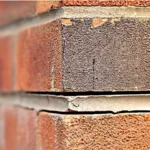Green roofs and living walls: An overview of benefits and installation
Green roofs and living walls are two of the most recent architectural and design trends in sustainable construction. These two ideas have revolutionized the way we think about urban environments by providing a more holistic and sustainable approach to making cities more liveable and sustainable. Numerous benefits are associated with green roofs and living walls, including reduced energy costs, improved air quality, and a more aesthetically appealing outdoor environment.
Green roofs and living walls provide numerous environmental benefits, including enhanced air quality and a reduction in the urban heat island effect. Additionally, green roofs and living walls can reduce runoff and create a habitat for wildlife. In addition, green roofs and living walls can reduce energy costs, enhance summer comfort, and provide additional winter insulation.
The installation of green roofs and living walls requires careful planning and expertise. The process involves:
- Selecting the right type of green roof or living wall.
- Ensuring the structure is designed for maximum efficiency.
- Installing the necessary materials.
There are several types of green roofs, each with its own characteristics and suitability for different situations. Here are some common types:
- Extensive Green Roofs:
Lightweight and shallow soil depth (typically 2-6 inches).
Suitable for low-maintenance applications and extensive plantings, including drought-tolerant sedums, mosses, and grasses.
Minimal irrigation requirements.
Provides moderate stormwater retention and thermal insulation.
- Intensive Green Roofs:
Deeper soil depth (6 inches or more), allowing for a wider variety of plant selections, including shrubs, small trees, and perennials.
Requires more maintenance and irrigation compared to extensive green roofs.
Provides greater stormwater retention, insulation, and biodiversity benefits.
Can accommodate recreational spaces, gardens, and even rooftop agriculture.
- Modular Green Roofs:
Pre-vegetated modular units or trays are used to create green roof systems.
Offers ease of installation, flexibility, and simplified maintenance.
Can be installed on various roof types, including flat or sloped roofs.
Provides options for both extensive and intensive plantings.
Disclaimer: This content is provided solely for your review. Erusu Consultants takes no liability for this article. The reader is advised to form their own opinion. Please consult a Structural Engineer before making any final decisions.






